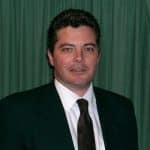When Do You Need to Aerate? How Long Does It Last?
A 12 month study looked at some key questions relating to when you should aerate and its frequency. Gilba Solutions are Sydney-based independent sports turf consultants and turf agronomists.
The result of this work is the introduction of our aeration calculator.
This work is relevant to lawn owners, sports grounds and councils. It relates to the timing of aeration work, reseeding and when to apply pre emergent herbicides.
Our recent blog on the science of soil aeration may also be of interest. The aim of this study was to answer these questions:
- What is the impact of use on soil compaction?
- What is the best way to alleviate soil compaction? Vertidraining or hollow tine aeration?
- How effective are these?
- How long does compaction relief persist when the ground is under constant use?
- Do you need to aerate on a regular basis?
This work dovetails with our turf blog on pre-emergent herbicide failure.
Findings
- Initial results showed the presence of surface and deep-seated compaction through the soil profile. This was causing poor drainage, and water to pool on the surface after rain.
- This study started in August 2021 with hollow tine aeration and vertidraining. Further aeration started in December 2021.
- Soil compaction levels above 2000 Kpa, were regarded as being at the upper limit before they limit turf root growth.
Conclusions.
- Vertidraining is not as effective as hollow tine aeration to relieve surface compaction.
- Continued use counters aeration work. Compaction relief is an ongoing process rather than a ‘’one-off’’ treatment.
- The answer to the question “when is soil aeration needed” is as often as possible.
- A combination of vertidraining and hollow tine aeration gives better results than any stand-alone treatment.
- Even after aeration there were still see areas above 2000 KPa. This further supports making this an ongoing program.
- The dual approach (vertidraining and hollow tine aeration) significantly reduces compaction. However, it doesn’t address high levels below 50 mm.
- These results suggest that aeration work doesn’t last more than 3 months when the site is under constant use.
- Many schools and councils carry out aeration once or twice a year. This work suggests that this is not often enough to maintain quality surfaces.
- If there is are high percentage of fines, the frequency of this work becomes even more important.
- Efforts should focus on targeting compaction at depth.
Graph Showing Compaction Variations (> 2000 KPa) at Depths over Time.
Graph of Compaction (>2000 KPa) over Time at Varying Depths.

Jerry Spencer
Jerry has an Hons Degree in Soil Science (1988) from Newcastle Upon Tyne University. He then worked as a turf agronomist for the Sports Turf Research Institute (STRI) until 1993.
He gained a Grad Dip in Business Management from UTS in 1999. He has held a number of technical roles for companies such as Arthur Yates (Commercial Technical Manager) and Paton Fertilizers (Organic, turf specialty and controlled release fertiliser) portfolios.
In 2013 he established Gilba Solutions as independent sports turf consultants and turf agronomists. Jerry has written over 100 articles and two books on a wide range of topics such as Turf Pesticides and turfgrass Nutrition which have been published in Australia and overseas.

